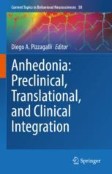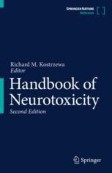Search
Search Results
-
Sudden cessation of fluoxetine before alcohol drinking reinstatement alters microglial morphology and TLR4/inflammatory neuroadaptation in the rat brain
Preclinical studies on the effects of abrupt cessation of selective serotonin reuptake inhibitors (SSRIs), a medication often prescribed in alcohol...

-
Cannabinoids Pharmacology, Abuse, and Addiction
Cannabis has a long history of therapeutic use and misuse. Δ-9-tetrahydrocannabinol (THC) was identified as the principle psychoactive component of...
-
Role of KCC2 in the Regulation of Brain-Derived Neurotrophic Factor on Ethanol Consumption in Rats
Alcohol use disorder (AUD) is a common and complex disorder resulting from repetitive alcohol drinking. The mesocorticolimbic dopamine (DA) system,...

-
The Role of Dopamine D3 Receptors in Tobacco Use Disorder: A Synthesis of the Preclinical and Clinical Literature
Tobacco smoking is a significant cause of preventable morbidity and mortality globally. Current pharmacological approaches to treat tobacco use...
-
Microglia sustain anterior cingulate cortex neuronal hyperactivity in nicotine-induced pain
BackgroundLong-term smoking is a risk factor for chronic pain, and chronic nicotine exposure induces pain-like effects in rodents. The anterior...

-
Physical Exercise Promotes Beneficial Changes on Neurotrophic Factors in Mesolimbic Brain Areas After AMPH Relapse: Involvement of the Endogenous Opioid System
Addiction is a serious public health problem, and the current pharmacotherapy is unable to prevent drug use reinstatement. Studies have focused on...

-
Diosgenin alleviates alcohol-mediated escalation of social defeat stress and the neurobiological sequalae
RationaleEmerging evidence indicates that persistent alcohol consumption escalates psychosocial trauma achieved by social defeat stress (SDS)-induced...

-

-
The correlation between upper body grip strength and resting-state EEG network
Current research in the field of neuroscience primarily focuses on the analysis of electroencephalogram (EEG) activities associated with movement...

-
Multimodal 7T imaging reveals enhanced functional coupling between salience and frontoparietal networks in young adult tobacco cigarette smokers
Tobacco cigarette smoking is associated with disrupted brain network dynamics in resting brain networks including the Salience (SN) and Fronto...

-
Social Isolation in Male Rats During Adolescence Inhibits the Wnt/β-Catenin Pathway in the Prefrontal Cortex and Enhances Anxiety and Cocaine-Induced Plasticity in Adulthood
In adult animals, it is well established that stress has a proactive effect on psychostimulant responses. However, whether only a short period of...

-
Dietary Modifications to Manage Stress
Stress leads to several health complications. Stress results in poor dietary habits and poor dietary habits lead to stress. Thus, stress and diet go...
-
Nitric Oxide Signaling Pathway in Ventral Tegmental Area is Involved in Regulation of 7,8-Dihydroxyflavone on Alcohol Consumption in Rats
We recently reported that intraperitoneal injection of 7,8-dihydroxyflavone (7,8-DHF), a brain-derived neurotrophic factor-mimicking small compound,...

-
Ferulic acid-loaded nanostructure prevents morphine reinstatement: the involvement of dopamine system, NRF2, and ΔFosB in the striatum brain area of rats
Morphine is among the most powerful analgesics and pain-relieving agents. However, its addictive properties limit their medical use because patients...

-
Anhedonia in Nicotine Dependence
Prior findings indicate that trait anhedonia enhances the likelihood of becoming a tobacco smoker, and preliminary evidence suggests that smoking...
-
Low-Molecular-Weight Mimetic of BDNF Loop 2 Reduces Ethanol Consumption in Female Rats
The study examined the effect of GTS-201, a low-molecular weight mimetic of brain-derived neurotrophic factor (BDNF) loop 2, on persistent alcohol...
-
Anhedonia, Hyperkatifeia, and Negative Reinforcement in Substance Use Disorders
Drug addiction has been defined as a chronically relapsing disorder that is characterized by a compulsion to seek and take a drug or stimulus, the...
-
Footshock-Induced Abstinence from Compulsive Methamphetamine Self-administration in Rat Model Is Accompanied by Increased Hippocampal Expression of Cannabinoid Receptors (CB1 and CB2)
Methamphetamine (METH) use disorder (MUD) is characterized by compulsive and repeated drug taking despite negative life consequences. Large intake of...

-
On the Disbalance and Impairment of Serotonin Heteroreceptor Complexes in the Rat Brain After MDMA and Hallucinogens Administration
The introduction of allosteric receptor–receptor interactions in G protein-coupled receptor (GPCR) heteroreceptor complexes of the CNS gives a new...
-
On the Disbalance and Impairment of Serotonin Heteroreceptor Complexes in the Rat Brain After MDMA and Hallucinogens Administration
The introduction of allosteric receptor–receptor interactions in G protein-coupled receptor (GPCR) heteroreceptor complexes of the CNS gives a new...
